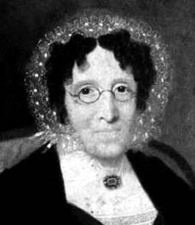After showing early artistic skill, Marie Tussaud apprenticed under one of the greatest wax modelers of her time. She made it—just barely—through the French Revolution and coupled her craft with keen financial acumen to create a business that still thrives today.
Madame Tussaud’s Early Days
Marie Grosholtz Tussaud was born December 1, 1761, in Strasbourg, France, to Anne Made, a recent widow of Joseph Grosholtz, who had died in the Seven Years War. When Tussaud was very young, her mother moved the family to Bern, Switzerland, where they lived with and worked for a prominent physician, Philippe Curtius. By some reports, Curtius was Tussaud’s uncle, but others describe the relationship as a close friendship.
Curtius was known for using wax models for anatomical studies and he soon shifted his focus to that of creating and displaying wax figures. After a short time in Switzerland displaying figures, he moved to Paris, opening a “salon” where people could mingle with sculpted renderings of famous people.
Always fascinated by Curtius’s work, Tussaud apprenticed herself to him and learned the delicate art of creating molds and pouring wax. By the time she was 17, Tussaud was sculpting some of the most noted celebrities of her time.
Sources in this Story
- Google Books: “Madame Tussaud and the History of Waxworks” by Pamela Pilbeam
- Madame Tussaud’s.com: Our Story
- The Raucous Royals: Death Masks
- Madame Tussauds International
- YouTube: Steve Taylor—Meltdown
Tussaud’s Notable Accomplishments
Although she showed early skill at wax modeling—her first two creations were of Jean-Jacques Rousseau and Voltaire—Tussaud abandoned the business to teach art to Louis XVI’s sister Elizabeth. She became a beloved friend of the royal family and lived at Versailles for nearly a decade. Her focus was on instruction but during this time she did manage to turn her familiarity with the monarchy into a popular wax exhibit for Curtius, “The Royal Family at Dinner.”
At the onset of the French Revolution in 1789, Tussaud’s chumminess with the Crown turned became a disadvantage—she was jailed for suspected royalist sympathies. Detained with her mother in La Force Prison, Tussaud was very nearly beheaded. Given a pardon, she was forced to pay for her freedom by making death masks of those who faced the guillotine. Among others, she modeled Louis XVI, Marie Antoinette and Robespierre.
As the revolution came to a close, her teacher Curtius was guillotined, and Tussaud inherited his business when he died. After marrying Frances Tussaud and bearing him two children, she decided to literally take her show on the road. In 1802, Tussaud arrived in England, where she began a tour that would have her continually traveling for the next 33 years. Her stops always made quite a splash in the small British towns she visited.
It was the world’s fascination with the gore of the French Revolution that ultimately brought her success. Her collection included an actual working guillotine, the death masks she made for its famous victims and models of the royals, including one of the king wearing his actual coronation outfit. By giving commoners a chance to get up-close glimpses at famous people and the dreadful events that surrounded them, Tussaud not only appealed to her audience’s sense of the fantastic, but also offered the allure of the macabre.
Seeing the revolution of mass transit beginning to take shape, Tussaud and her sons purchased a building in London near two train lines and set up shop in 1835. She quickly stopped touring, and the Baker Street location became the only place to see Tussaud’s figures. Tussaud capitalized on the growing popularity of museums, and set up her attraction with famous paintings and sculptures in addition to the models. Far and away the most popular room of Tussaud’s museum was the “Chamber of Horrors,” where she displayed her relics from the French Revolution in gruesome detail. The heads on pikes, bloody blades and tableaux of horror catapulted her museum to international acclaim.
The Woman and her Work
- “Madame Tussaud: A Life in Wax” by Kate Berridge
- “Madame Tussaud and the History of Waxworks” by Pamela Pilbeam
- “The Romance of Madame Tussaud’s” by John Theodore Tussaud and Hilaire Belloc
The Rest of the Story
Tussaud died on April 16, 1850, at the age of 88. But the business was kept alive by her sons and later her grandsons. In 1884, the original museum was moved to the location where it stands today, on Marylebone Road. Forty years later, it was destroyed by a fire. No sooner was it rebuilt than it was destroyed again during World War II. Today the original London location has been rebuilt and more have opened around the world, including in Hollywood, Bangkok, Berlin, Sydney, Tokyo, Beijing, and most recently in Orlando. In 2011, Madame Tussaud’s celebrated its 250th anniversary.
Thousands of celebrities have been cast in wax and it has become a sign of success to be featured as a Madame Tussauds figure. The museum even inspired a popular Christian rock song in the 1980s.
This article was originally written by Jennifer Ferris; it was updated December 2, 2017.











